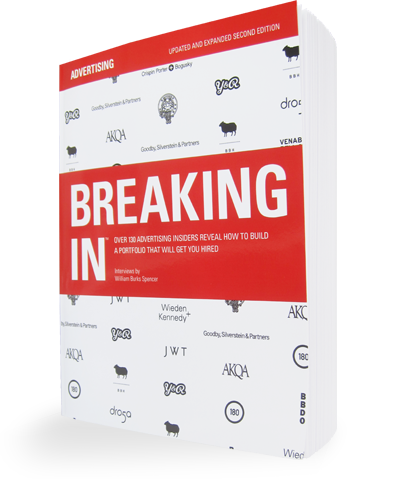In case you missed it, check out some great work from Bob Greenberg and R/GA.
BG: …Our business is no longer about a copywriter and an art director who go off to figure things out, come back with a TV spot and a print ad, and believe they’re doing what the client or consumer needs. People who come out of university now and go down the path of a traditional agency are, to me, making a huge mistake. Titles are not important, and their books are perhaps not exactly what we need, but if they’re good, then it would take between six months and a year to train them before they come up to speed.
At the end of the day, it’s not really about what we need; it’s what the consumer wants. So, I think the problem with some agencies is that they’re looking at managing the client and not really looking at what the consumer wants. Our approach is different: we look at what the consumer wants and then we get measurable results back to the client. We have some clients that are 90 percent marketing based and 10 percent digital platform, and certain clients who are just the opposite: 10 percent marketing and 90 percent systematic applications and platforms. It shifts. We’re probably almost a flip of Crispin Porter + Bogusky, where that agency might be, on one account, 30 percent platform and 70 percent marketing.
WS: What do you mean by “platform”?
BG: Platform would be like a Nike+, Nokia viNe, HP.com, or something like that. It’s systematic, digital applications for websites, digital marketing, and advertising, or it could be an application that ties into community—that kind of thing. On the other side of that, it may be very campaign led and marketing focused. We don’t advertise it, but we’re taking a lot of the budget from the traditional agencies. I was asked recently to judge television commercials for an organization, and I said I didn’t think I should be the person to do that because I don’t really believe in them. But we have done 4,000 commercials here, so it’s not like we or I don’t understand them. I’m very much for storytelling, which we do a lot of, and we have many people from traditional agencies—probably 100—who could be an agency on their own. I get very passionate about what we should be developing in terms of university curriculum so that graduates can actually get a job, not just at an agency like R/GA but at a company or traditional agency that has to make the transition. I don’t see the business being the same a few years from now.
We still partner art directors and writers here; on the marketing side, we think this structure works very well. But these people are one part of a team (visual designer, writer, and art director) that also includes an information architect, a media connections planner, a technologist, and a planner. So the team is a very comprehensive group.
WS: It’s a much bigger team.
BG: It’s a much bigger team, yeah, and the ideas often come from technology. As an example, the person who runs our Nike business, which is about 164 people, comes out of technology. We work across marketing, e-commerce, retail…
WS: So let me ask you this. What do you look for in a student’s portfolio who’s just starting out, and what impresses you?
BG: Well again it goes back to looking for conceptual thinking and problem solving. We pay attention to work—even if it’s not exactly like what we’re doing—that indicates the students have talent that would fit in here and be appropriate to a particular client, so if we’re looking to fill a position, perhaps we can tap that candidate. But I recall that even in the earliest days—when R/GA was doing basic motion and graphics, before there was the name “motion graphics”—I could look at a static print portfolio and know whether there was implied motion in the work candidates were doing, even when they’d never done any actual motion work. One acquires a certain amount of skill that, as I mentioned, goes across allocations of people. Recruiters, department heads—they can spot talent, even when specific experience is not reflected in a portfolio.
WS: And that’s my next question, about the finish of work. Is it okay if there’s potential there, or there’s a big idea there, for work to be less finished? Could it even be sketches on a piece of paper? Or does it need to be a nicely produced website?
BG: We’d be more interested in their ideas because, obviously, if students came here, we wouldn’t have a problem supporting them in whatever they needed. But they should have some examples of their design skills, visual interests, and relationships with color. I think that it’s probably both: they need to have some finished work to show what they’re capable of, from a craft perspective, and they need to have something that shows how they think. For example, a really good idea that comes out of a loose storyboard would be better than a well-executed storyboard without a good idea.

Comments are closed.